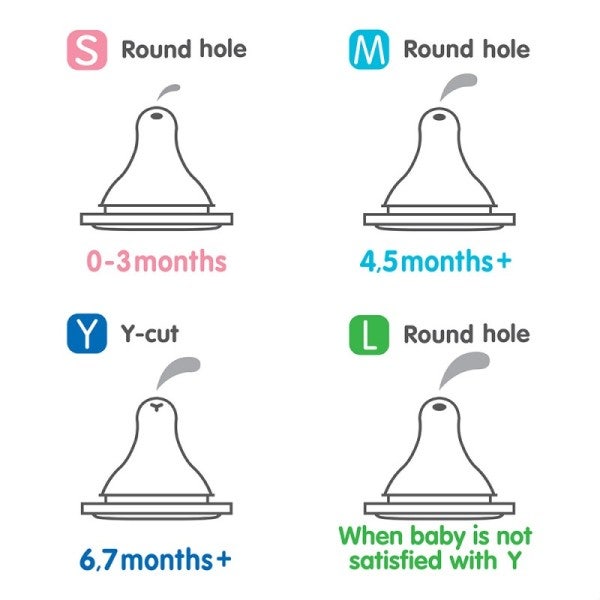🍼 Bottle Nipple Size Guide
2024-09-26
Hello, BabeSnap family! Today, we're going to explore the unsung hero of baby bottles - the nipple. It's amazing how much we can write about a single nipple, isn't it? That's how important it is. Shall we begin?
The Importance of Choosing the Right Nipple
Why is the nipple so important?
Dear parents, why do you think the nipple is important? For a baby, the bottle nipple is like a mother's breast. The right nipple helps your baby grow healthily and makes feeding time enjoyable. On the other hand, an ill-fitting nipple can irritate your baby and even cause digestive issues.
That's why finding the perfect nipple for your baby is crucial!
Nipple Shapes
Did you know that nipples come in different shapes? There are more varieties than you might think!

- Standard: The most common type. Suits most babies.
- Slow Flow: Has a smaller hole, good for breastfed babies or those prone to spit-up.
- Fast Flow: Has a larger hole for faster feeding. Suitable for older babies or those with hearty appetites.
- Ultra-Soft: Very soft, ideal for sensitive babies or preemies.
- Y-Cut: Has a Y-shaped opening, great for thicker formulas or baby food.
These classifications may vary between nipple manufacturers. The key is to understand that different nipple shapes serve different purposes.
Age-Based Nipple Guide
Now, let's look at which nipples are best for different age groups:
- 0-3 months: Use the smallest size or 'Stage 1'
- 3-6 months: Move to 'Stage 2'. These usually have 2-3 holes.
- 6-9 months: Try 'Stage 3' or 'Y-cut' nipples.
Remember, this is just a guide.
The most important thing is to observe your baby's reaction!
When to Size Up or Down
The key is to start with the smallest nipple size and gradually increase!
To do this, you need to know when to size up and when to size down.
Here are the signs to look out for:
🔺 Signs it's time to size up:
- Your baby struggles to suck from the bottle.
- Feeding times are becoming too long.
- The baby is collapsing the nipple while feeding.
- The baby still seems hungry after feeding.
🔻 Signs it's time to size down:
- Milk frequently leaks from the baby's mouth.
- The baby coughs or chokes during feeding.
- The feeding pace seems too fast.
- The baby burps excessively.
If you notice these signs, consider adjusting the nipple size.
And don't forget to observe for 2-3 days after making a change!
Well, that's (almost) everything about bottle nipples! It might seem complicated at first, but with practice, you'll find the perfect nipple for your baby. Enjoy happy feeding times with your little one! If you have any more questions, feel free to ask~
You might also like

Baby Poop Colors: What's Normal?
Today, we're going to delve into a topic that many parents are curious about: 'Newborn Baby Poop Colors'. As this is an important indicator of your baby's health, understanding this information will be a great help in your parenting journey. Shall we explore together? 😊 ---...

Baby's First Solid Foods: A Complete Guide to Starting Solids
Today, we're diving into a crucial topic: 'A to Z Guide to Starting Solids for Your Baby'. (Honestly, I was so nervous when I started this journey... You might feel the same!) So, let's tackle this big concern for parents - your baby's first solid foods! Ready to explore how to get started? ...